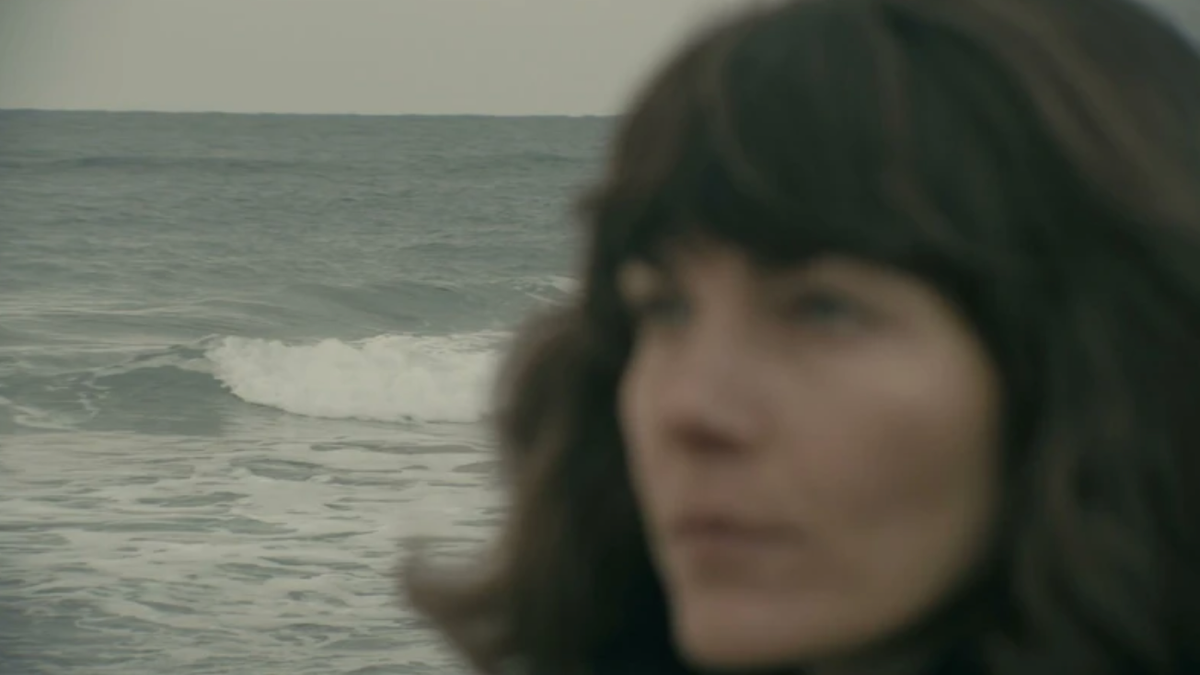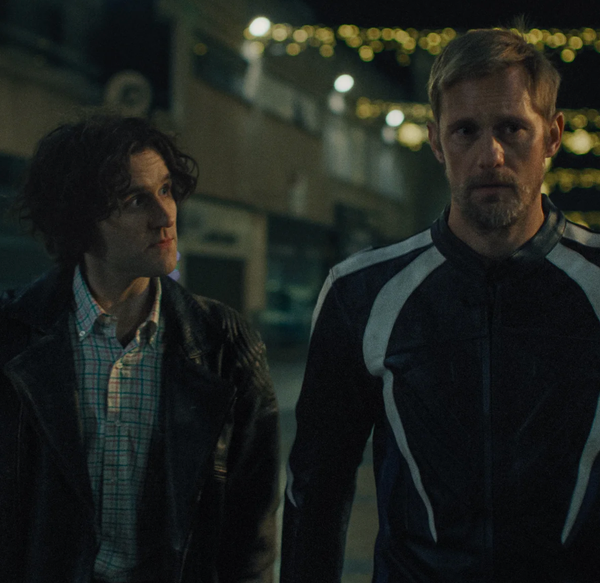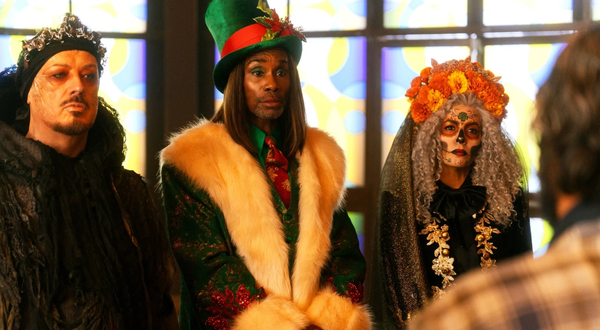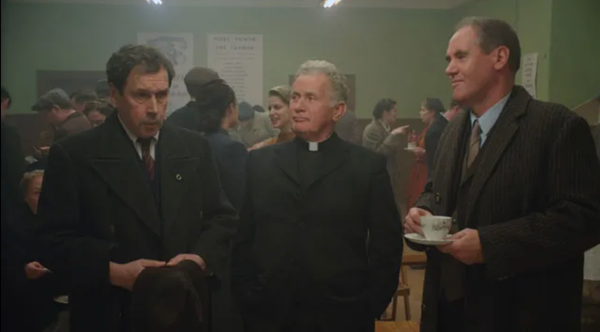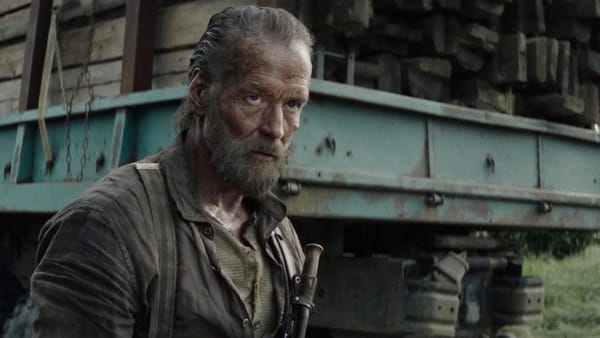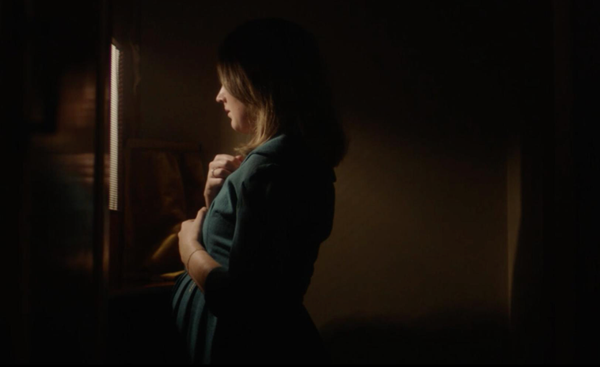Sabi Nicholson lays the foundations in her review of Adrian Duncan's Latina, Latina, which screened at Docs Ireland.
Would it be cliché to bring up Ozymandias when discussing a film about fascist-era architecture? Director Adrian Duncan states in an RTÉ interview Latina, Latina that his projects “always begin with an object.” In this case, the objects in question are the futurist sculptures guarding the entrance to the train station in Bolzano, Italy. Designed by Franz Ehrenhöfer, the statues are of a man and a woman, both holding large machine parts that seem to meld into their bodies.
The film is intentionally vague about its relationship to fiction. Every so often we see glimpses of the narrator, our nameless protagonist and guide, played by actor Sabrina Mandanici. She embodies a geologist who finds herself reading her father’s diary entries that detail a trip of his to Italy. She notes the statues that he also observed are “at once ferocious and catatonic” in their expressions. This feels close to a distillation of the film itself.
Latina, Latina opens with the news that the protagonist’s estranged father has fallen down the stairs in his apartment in Berlin and lost consciousness. She wrestles with her conflicted feelings, travelling to his home and reading through his journals. This is an attempt to find connection with the man who walked out on his family. While her father’s writing is certainly revealing, it uncovers more a fixation on the post-war remnants of Italy’s fascist infrastructure than thoughts of family and loneliness. The film takes us on an essayistic journey through Italy, where molasses-slow zooms on carved marble and rolling fog provide a backdrop to something more tense and melancholy.
At a slow pace, its 84-minute runtime seems to expand and contract like a bellows, with periods of silence between the casual but confiding tones of the narrator (author Wendy Erskine). This lets the viewer steep in the ominous, dreamy feeling that pervades the whole film. Latina, Latina holds a mirror to itself when the diarist’s longtime associate, Carlo opines that photography is a lesser language of perception: “its only value is to produce triggers to memories – it is no good for seeing with.” There is so much unseen but still felt here, but the beautiful cinematography from Feargal Ward encourages the eye to explore and the ear to listen, filling in the gaps in understanding and connection that the protagonist is also facing.
The purpose of a documentary is, typically, to document. While Latina, Latina is an active blurring of the borders between fact and fiction, it does indeed document, explore and expound upon hierarchies, the ghosts of history and the cyclical nature of politics. It perhaps goes without saying that in our current political climate it remains particularly urgent, and the constructed elements accentuate this. It’s a travelogue of memory that feels, at points, all too real. But all empires fall eventually.
Latina, Latina screened at Queen's Film Theatre on 26th June 2025 at Docs Ireland.

